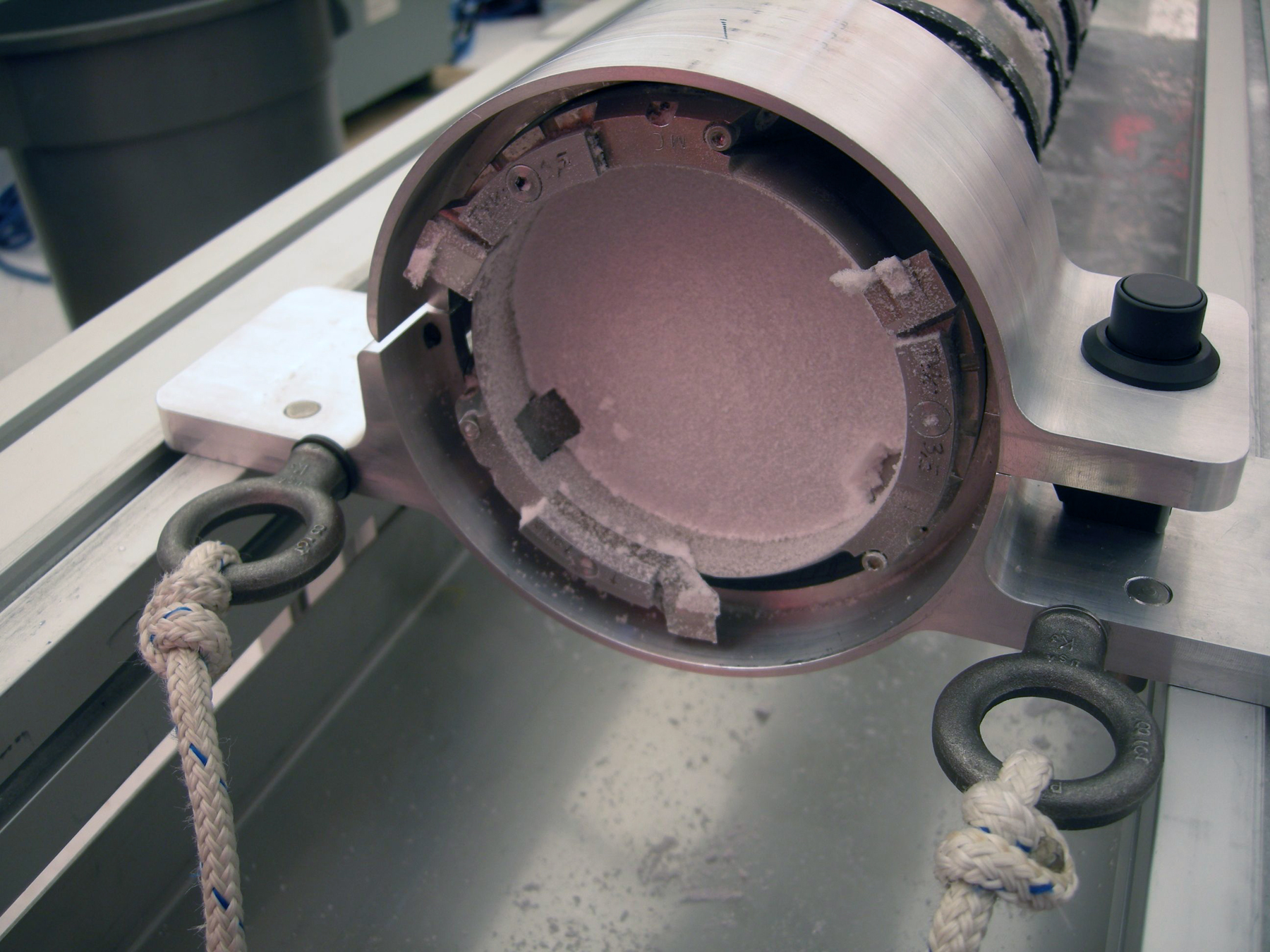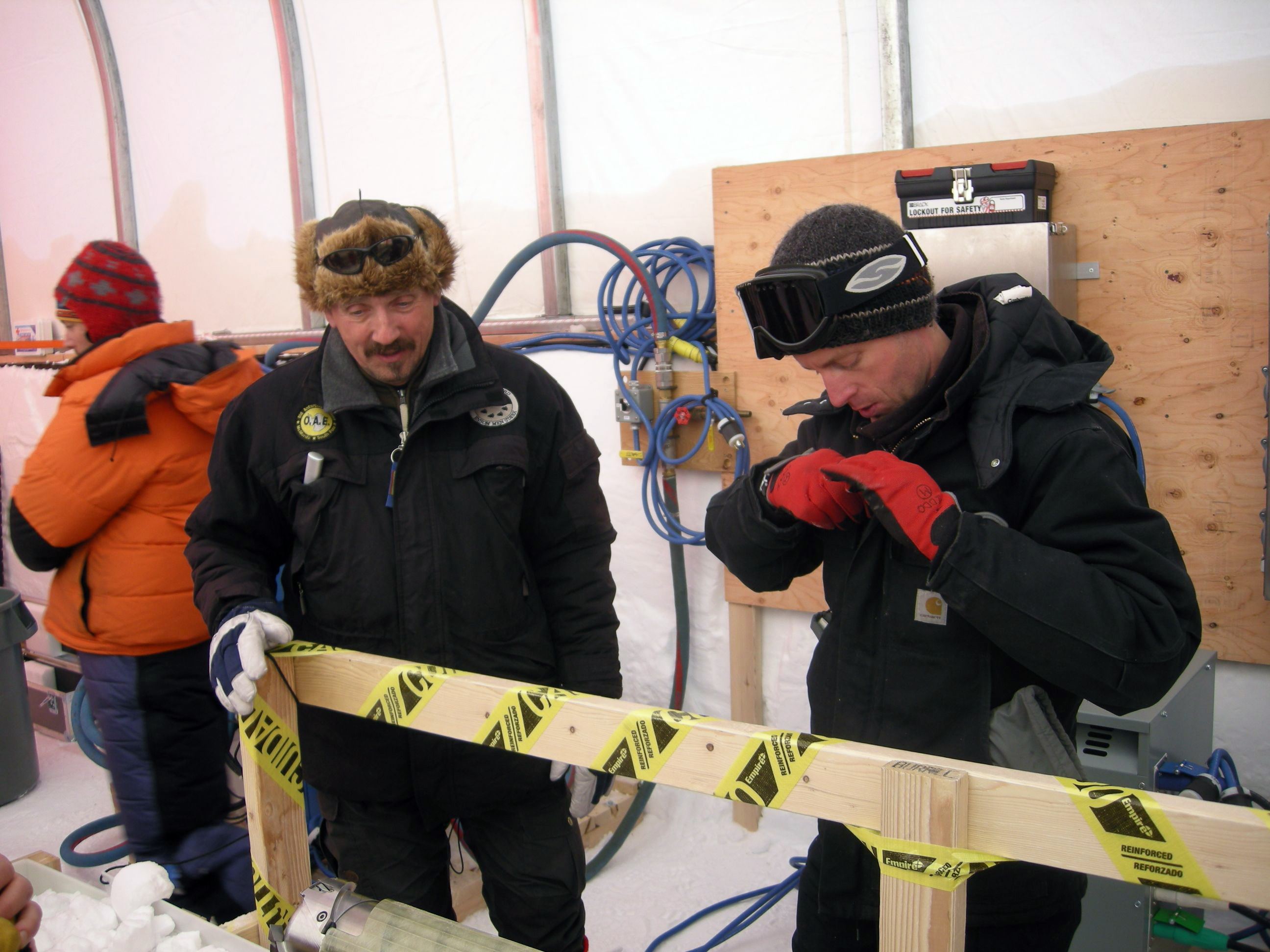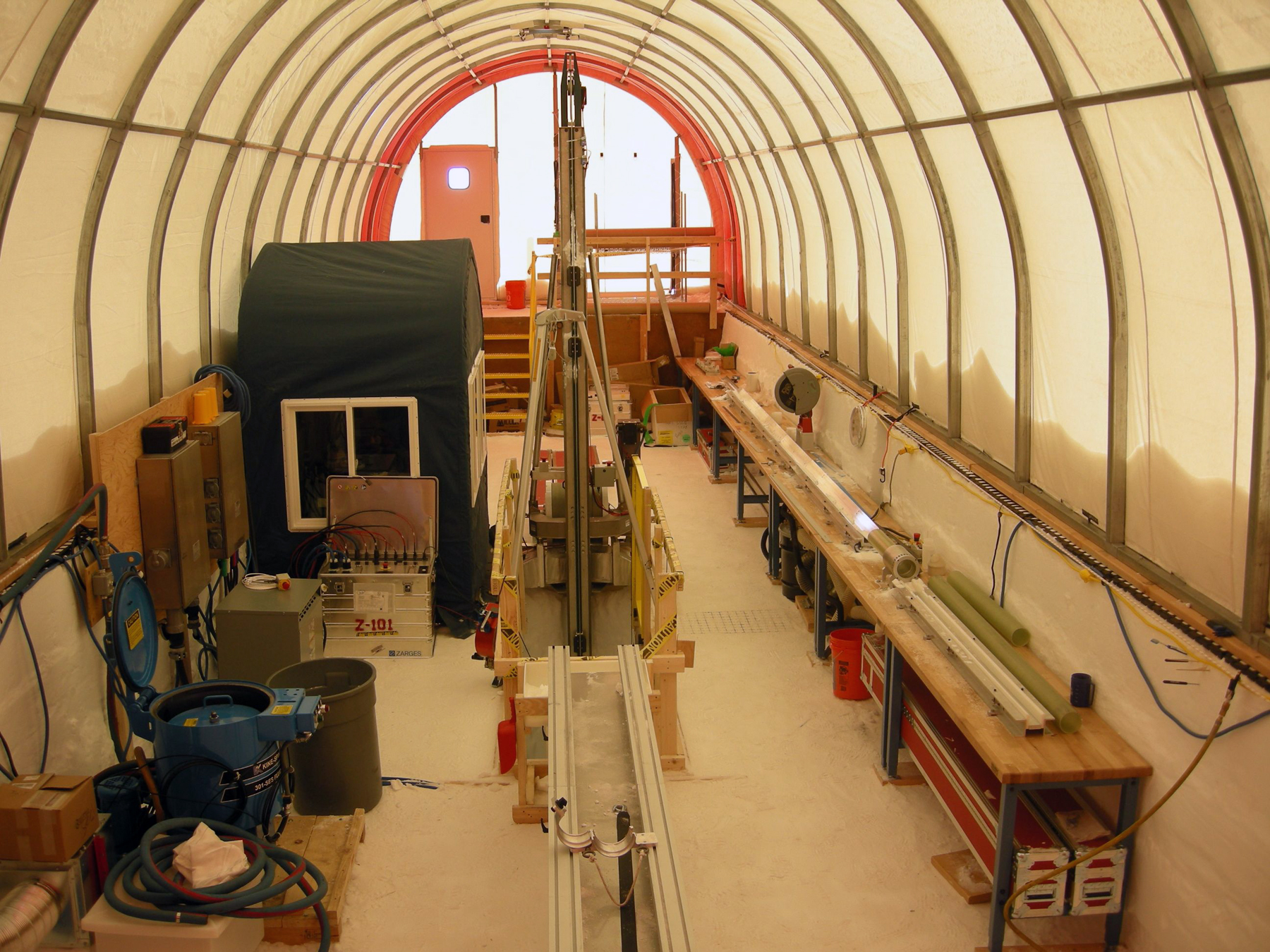
In Mark Twickler's world, "small" is relative. When it comes to a new ice core drill that's being developed and tested by a team of specialized engineers from the Ice Drilling Design and Operations group (IDDO), small means about 20,000 pounds. This new drill recently underwent field-testing at Summit Station in Greenland prior to its deployment at South Pole.
"We need to limit the drill's logistic footprint and get the cores we need," says Twickler, a project manager at the University of New Hampshire for large, multi-institutional projects.

Intermediate Depth Drill (IDD)
The types of cores he's talking about are those up to 1,500 meters deep. These ice cores are believed to contain climate records from 40,000 years ago. The new drill, which is an "intermediate depth drill (IDD)," will allow them to mine the depths of Antarctica and Greenland for cores that will help reconstruct regional patterns of climate variability in order to provide greater insight into the mechanisms that drive climate change.
Access to previously inaccessible ice cores
More, the drill will enable the obtainment of a wide range of ice cores, which will contribute to the growing knowledge of climate history and events. This data can be used in present day models to better predict climate and ice sheet stability on long time scales.
"The ice at South Pole is very clean, which means it will be good for measuring trace amounts of atmospheric gases trapped in the ice core," says Twickler.
However, before the drill heads south, it first traveled north to Summit Station in May, where a team of engineers put it through a series of tests, which it passed.

Modeled after a Danish Template
The drill was developed by the Ice Drilling Design and Operations group from the University of Wisconsin and is modeled after a Danish drill that was already in operation. It consists of a core barrel with teeth that rotate and drill into the ice. It also comes equipped with a cable to suspend and power the drill, a control box and a winch for the cable. Finally, the drill has the capacity to pump fluid into the drill hole, which is essential once the drilling exceeds a couple hundred meters. Below that depth, the hole is under more pressure and will close if fluid is not injected to counteract the pressure of the ice.
Testing Specifics
Twickler says various fluids with different components are available, and the Greenland tests for the IDD experimented with a new, previously tested fluid that complies with all environmental regulations. While it worked well, it has an unpleasant aroma, which the team is working to mitigate in order to, make the drilling environment enjoyable, he said.
South Pole Bound
Once the drill is fine-tuned and completed, it will ship to South Pole Station in Antarctica. Science proposals to analyze the core were submitted to NSF in April and the South Pole Ice Core project is coordinated by investigators from University's of California-Irvine, Washington and New Hampshire.
Stationing it at the South Pole makes sense, given the pristine cores that are expected to be retrieved and the fact that a research station is already there.
"That's big," says Twickler. "We can go in, get our core, and get out in two field seasons."
Ice Cores 101
More, the drill is expected to produce ice cores of excellent quality. These are perfectly intact cores that are two meters in length, says Twickler.
When drilling for ice cores, technicians first dig a five-foot deep trench that is then covered with a weather port to shield the workers from inclement weather. Then they use the drill to "core into the ice sheet vertically, but pull the core out horizontally." Once harvested, ice cores are cut into one-meter lengths for shipping convenience, packaged so as to preserve their integrity, and shipped to the U.S. National Ice Core Lab in Lakewood, Colorado.
Increased efficiency, lower costs
Once the drill is in use, it will allow scientists to drill for ice cores with increased efficiency and lower costs, says Twickler.
"If you're trying to do a deep ice core drill project like the recent Antarctic WAIS Divide it requires a lot of resources to bring in large drills," he says. "With a smaller drill and a lighter logistic footprint, we can go to more places and get ice cores that we wouldn't otherwise be able to collect."
For more information on the South Pole Ice Core project, visit http://spicecore.org.

